Lithium Batteries Shipping from China
If you need help transporting lithium batteries from China to USA, Canada, Australia and any other Countries, go no further than Winsky Freight. We have been entrusted with the delivery of lithium batteries since 2010.
Our objective is to ensure your batteries are carried safely and effectively according to local and international regulations.
If you require assistance with lithium batteries, we can help you. We will check everything, including the insulation, packaging, and labeling, make sure Each package is packed correctly and with the highest regard for safety standards before being sent out.
We’ll take care of getting your paperwork in order after you’ve told us where to send it and we’ve finished packing. Packing slip, commercial invoice, declaration for hazardous materials. In order to avoid any complications at customs, we will double-check everything.
Contact us now to get the best price for your battery shipping from China.
How to Pack & Ship Lithium Batteries from China|Everything You Need to Know
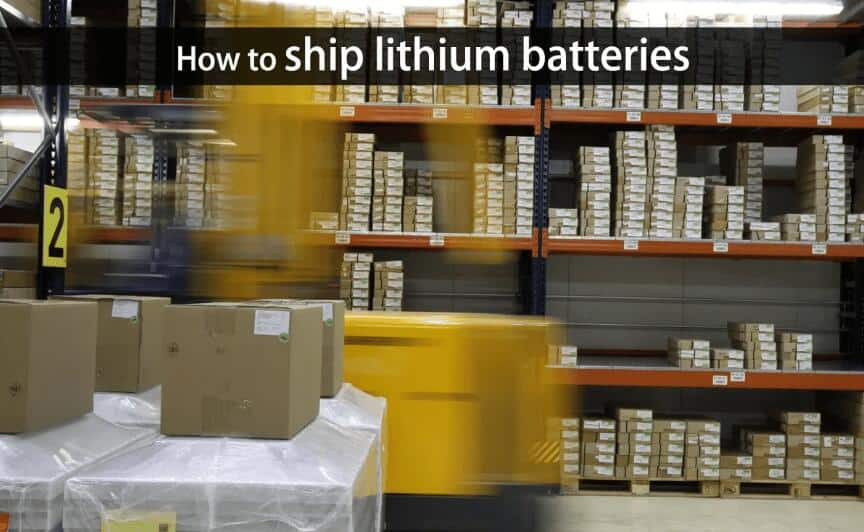
Exports of Chinese lithium batteries account for 73% of the global market.
However, environmental and safety problems arise if hazardous materials are handled incorrectly, and they overheat, leak, or explode.
Business owners, online shoppers, and IT fans all need to be handled with care. To ensure the secure movement of these potent energy sources across borders, familiarity with international shipping protocols is vital.
- Are Shipping Lithium Batteries Dangerous or Not?
- Why Shipping Lithium Batteries from China Requires Special Handling?
- Different Types of Lithium Batteries
- Which Lithium Batteries Can be Exported from China?
- Best Incoterms for Shipping Lithium Batteries from China
- Does Amazon FBA accept Chinese lithium batteries?
- What are the Applications of Lithium Batteries?
- Quality Standards for Lithium Batteries
- Understanding International Lithium Battery Shipping Regulations
- Can you use a Chinese courier service to ship lithium batteries?
- Packaging Requirements for Shipping Lithium batteries from China
- What Role Does Manufacturing Play When Transporting Chinese Lithium Batteries?
- How Important is the Freight Forwarder in the Transport of Lithium Batteries from China?
- Quality Standards for Lithium Batteries
- What are the IATA guidelines for shipping lithium batteries from China?
- Proper Steps for Packing Lithium Batteries for Shipping
- The Importance of Complete Paperwork When Avoiding Customs Delays
- To What Specifications should Chinese Lithium Batteries be Built?
- FAQs
1. Are Shipping Lithium Batteries Dangerous or Not?
The simple answer to this question is yes if they’re not handled properly.
Lithium batteries are pretty risky and need to be handled with care. If not, they could explode or overheat while you’re moving them.

Environment
When accidents happen, it can be scary to think about the aftermath. Not only are we affected by it, but animals are too. The water we drink and the air we breathe can easily become contaminated with harmful substances.
Safety Precautions
You should be taking as many precautions as possible when handling these types of batteries.
- Make sure every single package is labeled correctly. For example, “Lithium Batteries – Handle with Care” and any other labels that meet national and international regulations.
- Use strong materials like boxes and bubble wrap while packaging them.
- Fully charged batteries don’t tend to short-circuit as often as regular ones do. Check to see if they are before moving them around.
- Wrap each battery individually in insulating material so they don’t touch or make contact with each other or other metal objects.
- Additional measures may be required depending on the type of lithium you’re shipping
2. Why Shipping Lithium Batteries from China Requires Special Handling?
The process of importing and exporting lithium batteries from China is a very tricky one for many reasons. Let’s look at a few examples.
Physical Risks
Anyone in this industry knows lithium batteries are very fragile. If they aren’t packed correctly, they can burst or heat up quickly. Picture a bunch of batteries exploding mid-flight. Not only will that be dangerous for the plane but also for the people on it.
Environmental Risks
In addition to being dangerous if not handled properly, lithium batteries can also be harmful to our environment. They contain toxic substances that are released when they leak. This leakage happens when the battery is damaged by things like force or being dropped. The implications end up seeping into the soil and water, which then hurts plants and animals in those areas.
Regulatory Compliance
We won’t even get started on how many rules there are around shipping lithium batteries from China. China and other countries have these rules in place to make sure the batteries are packed safely so they don’t release any substances during transport while also protecting the environment.
Shipping Lithium Batteries from China requires special handling because of its characteristics and risks.
Because of their instability, if no caution is taken to pack them tightly, they can burst when exposed to certain conditions by generating heat rapidly.
This doesn’t just compromise the safety of people on board but also aircraft transporting them.
And that’s not all! These things are also bad for the environment if leaked. Which comes with consequences such as contaminating soil and water they come into contact with, which leaves a negative effect on everything living there.
Given how high stakes it is, it’s important that we have skilled personnel handling each step of this process.
Packing alone must be done by someone who understands it at an expert level, or else accidents are more prone to happen.
One small mistake can start a domino effect, crippling entire operations and potentially leading to severe consequences.
To minimize environmental risks, it’s important that we follow these guidelines:
- Regularly check shipping equipment to stop leaks or spills
- Create as little waste as possible and dispose of it correctly
- Follow all environmental regulations and standards
- Train staff on proper handling procedures and how to handle potential environmental damages.
- Create a response plan for accidents during the shipping process.
- kEEP AAWUAS FRO, children
By following these steps, we can reduce the risk of damage while also making sure we don’t ruin our natural resources.
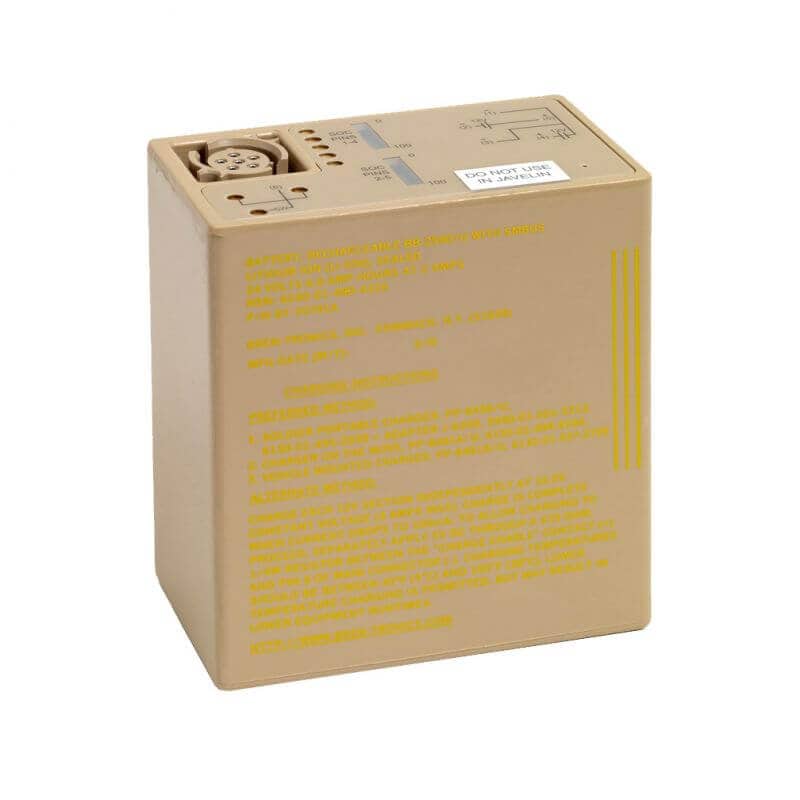
3. Different Types of Lithium Batteries
Okay, we know what you’re thinking. Batteries are batteries. But each one has its own special features and uses. Let’s take a look at the world of lithium batteries.
One of the best and most commonly used is Lithium Iron Phosphate or LiFePO4 (pronounced liff-oh-four). It’s in the name, but it is indeed a type of lithium-ion battery. A couple of big perks that come with it are safety and long life.
Compared to other types of lithium-ion batteries, these don’t heat up as much, which makes them safer to use. They can be found inside electric vehicles, solar power storage, and even some portable electronic devices.
Lithium Manganese Oxide
Lithium Manganese Oxide batteries, often shortened to LMO, are a type of battery that packs quite a punch. They are full of power and can be used to run lots of different kinds of gadgets.
Best For
LMO batteries are a top choice when it comes to electronic devices and electric vehicles. Their power and the fact that they can be recharged many times make them a great pick for these uses.
Lithium Nickel Cobalt Aluminum Oxide
NCA batteries, short for Lithium Nickel Cobalt Aluminum Oxide batteries, are small energy packs. So, how do they hold so much power? It’s all thanks to their mix of nickel, cobalt, aluminum, and lithium.
Best For
If you want a battery for something with a lot of horsepower then this is perfect for you. You won’t find many others as good as this one regarding big jobs.
Lithium Titanate
The LTO battery is really fun because it has the ability to recharge quickly. So if your battery runs out of juice, all you have to do is wait a little bit before you can use whatever device it was in again.
Best For
The LTO battery is the answer if what you need is a battery that can recharge quickly. So things like buses, cars, and energy storage systems fit this perfectly.
Lithium Nickel Cobalt Aluminum Oxide
The Lithium Nickel Cobalt Aluminum Oxide battery, or NCA for short, is a powerhouse. It’s secret is the blend of nickel, cobalt, aluminum, and lithium used to make it. This blend helps it hold a lot of power.
Best For
Big tasks that need lots of energy are perfect for this battery. So if you’re looking for one that’ll go into your electric car or power tool, this would be your best bet.
Lithium Titanate
The Lithium Titanate battery, known as LTO for short, is amazing in its own way. One of which is how fast it can recharge itself. If your device dies on you, just give it a few minutes before you use it again.
Best For
If you have things that die on you often, then this would be the best pick. So, it’s perfect for buses, cars, and energy storage systems that need a quick battery replacement.
4. Which Lithium Batteries Can be Exported from China?
Lithium Iron Phosphate
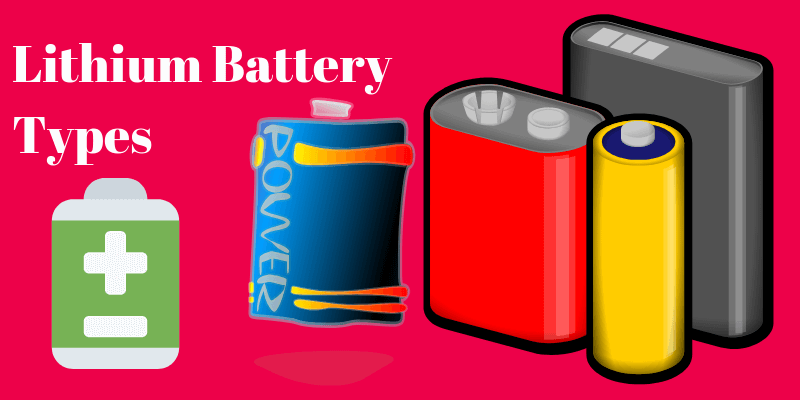
China is a exporter of Lithium Iron Phosphate (LiFePO4) batteries. These batteries are known for being super stable and have great resistance to heat. They’re like the perfect balance between performance and safety, so if you want long-term use with extreme operating conditions, these are the way to go.
Devices That Use Lithium Iron Phosphate
LiFePO4 batteries see heavy use in electric vehicles. Mainly because they have a high energy density and cycle life. If you’re using solar energy storage, then this battery is also a good pick due to its stability and safety characteristics. Power tools, laptops, and emergency power back-ups are also use where output is crucial.
Limitations of Lithium Iron Phosphate
5. Best Incoterms for Shipping Lithium Batteries from China
Like all things, there are downsides, too. One of the biggest downsides to LiFePO4 batteries is their lower operating voltage compared to other lithium-ion chemistries.
This might stop them from being used in high-voltage devices. Their energy density is lower than other lithium battery types, too, so this could restrict their use in compact devices that need longer charges on one fill-up.
Incoterms with which you should ship lithium-ion batteries from China
Incoterms are agreed-upon rules of trade that are meant to facilitate the buying, selling, and transporting of products. Important Incoterms include:
Ex-Works (EXW)
In this condition, the buyer is responsible for paying for and bearing any risks associated with transportation from the seller’s location. Once the products are ready for pickup at the seller’s location, the onus of care is passed to the purchaser.
Free Carrier (FCA)
With FCA, the seller hands off the items to the transport company or agreed-upon third party (such as a warehouse). The risk of loss or damage to the goods passes to the purchaser upon delivery to the carrier.
Carriage Expenses Paid For
Here, shipping costs are covered all the way to the buyer’s specified location by the selling party. However, once the items have been handed off to the carrier, the risk of loss or damage, as well as any price increases, has been passed on from the vendor to the consumer.
CIF (Cost, Insurance, and Freight)
When using this term, it is understood that the seller loads the items onto the ship and covers the costs of transportation and insurance all the way to the specified location. As soon as the items pass the ship’s rail at the port of shipment, the risk of loss or damage passes from the seller to the buyer.
Best Incoterms for New Shippers
New shippers have a lot on their plate when it comes to shipping batteries from China, so a good option for them would be getting CIF terms.
This term includes cost, insurance, and freight. It also removes much of the weight on new shippers by putting most of the shipping responsibilities on the seller. The seller will take care of transportation and insurance costs.
It’s a huge help for those who still haven’t figured out how to get logistics or insurance arrangements yet.
Best Incoterms for Experienced Shippers
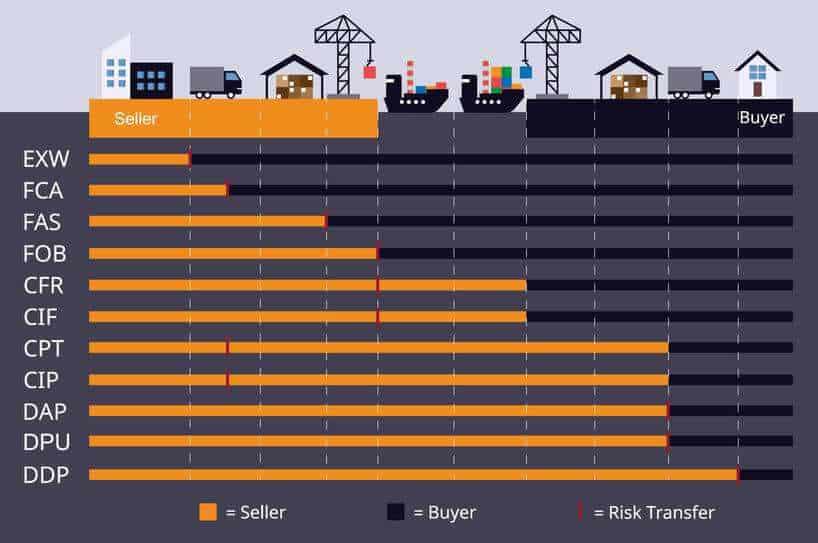
Experienced shippers who want to reduce costs can try FCA terms. Until goods are delivered to the carrier at a specific location, sellers cover the cost.
From there, buyers will take over responsibilities. This arrangement lets experienced shippers negotiate with their own carriers to try and get cheaper freight rates, which in turn reduces overall shipping costs. But this is assuming that the buyer knows what they’re doing when it comes to managing logistics.
6. Does Amazon FBA accept Chinese lithium batteries?
Amazon FBA has regulations and laws that restrict products associated with Chinese lithium batteries since they can be dangerous goods.
They do allow limited quantities, though. To make sure you know all of the specifics and packaging requirements, it’s important to check with Amazon’s Seller Central. For example, they need UN3481 labeling done properly. Don’t forget to consult your supplier and freight forwarder so you’re absolutely certain you’re in compliance.
7. What are the Applications of Lithium Batteries?
- Consumer electronics: Smartphones, tablets, and laptops.
- Electric vehicles: Powering propulsion systems.
- Renewable energy: Storing excess electricity from solar panels and wind turbines.
- Medical devices: Such as pacemakers.
- Aerospace technology: Used in satellites, UAVs, and space shuttles.
- Marine vessels: Providing auxiliary power onboard ships and submarines.
Available Size and Capacities of Lithium Batteries
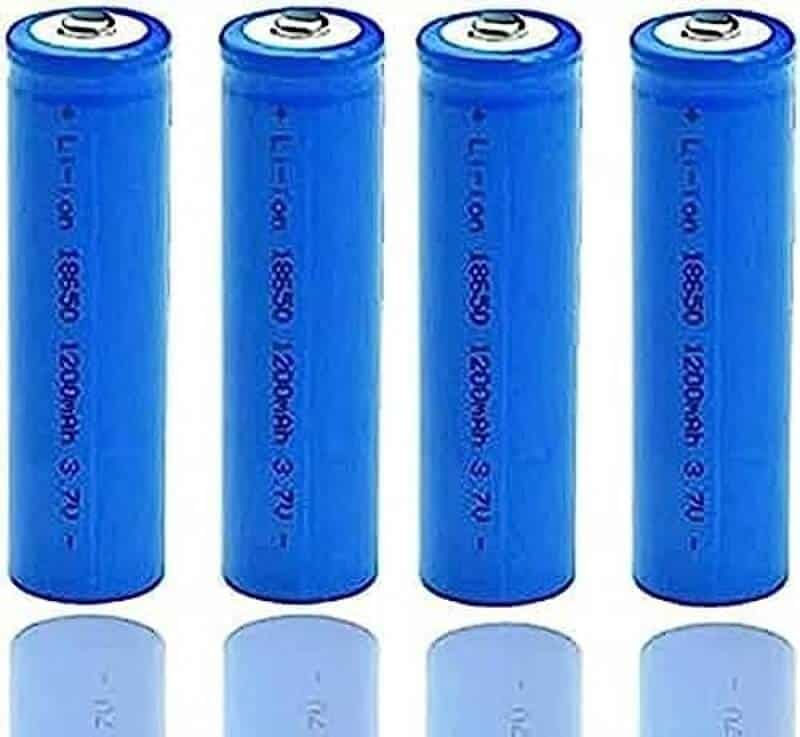
Lithium batteries come in various sizes and capacities to suit different devices and applications.
- AAA, AA, C, and D Batteries: These are common household sizes. AAA and AA lithium batteries typically have capacities of around 1200-3000mAh. C and D batteries can go up to 19,000mAh.
- 9-Volt Battery: A typical 9-volt lithium battery has a capacity of around 1200-1200mAh.
- Coin Cell Batteries: These are small, round batteries used in devices like watches and small electronics. They have capacities ranging from 3mAh to 500mAh.
- 18650 Batteries: These are commonly used in laptops, flashlights, and other devices. Capacities vary from 1500mAh to 3600mAh.
- Laptop Batteries: Laptop batteries can have capacities from 2000mAh to 6000mAh or more, depending on the laptop’s model.
- Power Banks: Power banks use lithium batteries and come in various capacities, such as 5000mAh, 10000mAh, or even 20000mAh.
- Electric Vehicle (EV) Batteries: These are large lithium batteries, with capacities ranging from 40kWh to over 100kWh, depending on the vehicle.
- Grid Energy Storage: For large-scale applications, lithium batteries can have capacities in the megawatt-hour (MWh) range.
The following table provides an overview of the available sizes and capacities of typical lithium batteries. ‘Mac Power’ denotes the maximum continuous discharge current the battery can provide.
| Size | Capacities (mAh) | MaC Power (A) |
|---|---|---|
| 18650 | 1000 – 3500 | 1 – 20 |
| 26650 | 3300 – 4500 | 15 – 32 |
| 21700 | 3000 – 5000 | 15 – 35 |
| AA | 600 – 1000 | 1 – 3 |
| AAA | 300 – 600 | 0.5 – 1.5 |
8. Quality Standards for Lithium Batteries
When shipping lithium batteries, it’s important to ensure their safety and reliability. To do this, they must follow certain rules. The UN/DOT 38.3 Testing is a global standard that does just that. It checks how safe lithium batteries are during transportation.
It doesn’t matter if they’re rechargeable or not. Both types have to undergo this test.
Another worldwide standard that applies to portable applications is the IEC 62133. It basically sets out the safety requirements for secondary cells.
Also used to set out safety requirements is UL 1642. This is one of those classic standards. It primarily focuses on evaluating singular battery cells.
Finally, we have the IEEE 1625/IEEE 1725 standards. These two lay down quality assurance standards in battery design, manufacturing, and assembly for everyday electronics like laptops and cell phones.
All manufacturers of these batteries must follow these guidelines in order for their products to be safe and reliable.
9. Understanding International Lithium Battery Shipping Regulations
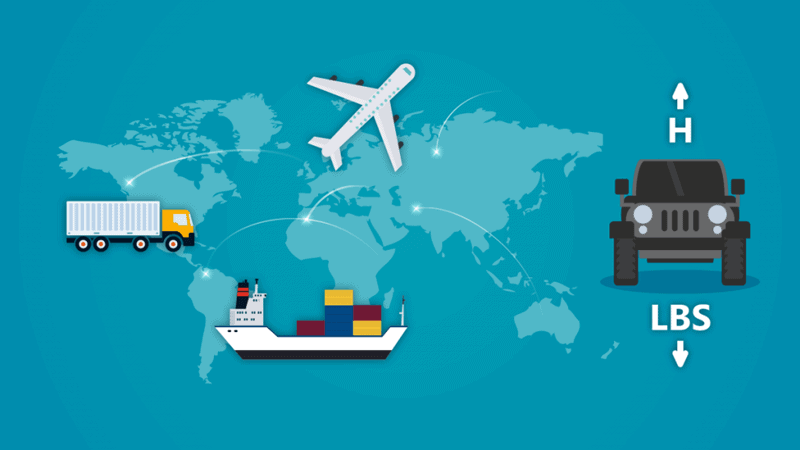
Shipping lithium batteries can be risky if not done right, and thus, there are some pretty strict rules around it from the International Air Transport Association (IATA).
One of them is that you can’t transport damaged or defective ones by air. You also can’t ship more than a certain amount per shipment, so check before making arrangements! Nonetheless, packaging requirements still have to be met — no shortcuts there.
10. Can you use a Chinese courier service to ship lithium batteries?
Absolutely, it’s possible to get your lithium batteries sent via a Chinese courier service. However, it does come with its own share of pros and cons.
Advantages
For one, Chinese couriers know their way around the country. They can use established relationships with local manufacturers to expedite the process. Another benefit is their knowledge of packing and shipping lithium batteries in accordance with the standard regulations. And often, more importantly, it’s cheaper than international services.
Drawbacks
That doesn’t mean that there aren’t any downsides. Since they’re located halfway across the world, they’ll likely be communicating in different time zones, which can lead to confusion. But even if you forget about that for a second, language barriers can still cause just as many problems.
Lastly, the people working at these courier services may not be aware of specific regulations your destination has, which could impact customs when arriving.
Costs
There are many factors that determine costs, like the size and weight of your shipment, the courier you choose, and the destination itself. If we were to make an estimate, though, shipping through a Chinese courier service tends to range from $5 to $15 per kilogram.
Best Practices When Working with Courier Companies
- Make sure all details regarding your shipment are clear, such as how big and heavy it is, along with the fact that it contains lithium batteries.
- Check if the courier has experience handling this kind of item while following safety rules.
- Use online reviews as a means of gauging reliability.
- Ask about insurance and claims processes.
- Save time by providing accurate shipping information so nothing gets delayed.
- Follow all packaging guidelines, especially for these types of batteries.
- Label packages clearly indicating they contain lithium batteries.
- Use tracking services so you never lose sight of your shipment until delivery.
- Be wary of any extra fees related to lithium batteries.
Is it better to ship lithium batteries from China individually or in equipment?
The decision on whether to send lithium batteries individually or inside of equipment depends on the specifics of your shipment as well as the regulations of the country it’s going to.
When you ship them individually, more rigorous packaging is required, and these types of batteries must be clearly labeled due to their hazardous nature. However, this method allows for more flexibility when it comes to shipping options and quantity since there are no restrictions on size and weight.
Alternatively, shipping lithium batteries inside equipment can be easier when it comes to packaging since the equipment provides extra protection. But this method may also limit how many batteries you’re able to ship at once depending on the size of the equipment but that’s not a big deal if you don’t have too many or aren’t on a time crunch. In addition, importing countries might have different regulations for items that contain lithium batteries versus individual ones so check those before making any decisions.
11. Packaging Requirements for Shipping Lithium batteries from China
Types of Packaging Materials Required
Making sure Chinese lithium batteries are packed correctly is very important when shipping. To prevent movement, put each battery in anti-static bubble wrap or bags. And then pack them together in a very sturdy box made out of corrugated cardboard.
Ensure the outside box isn’t loose by cushioning its surrounding area with materials like foam peanuts.
Proper Labeling and Markings
Lithium battery shipments require specific labeling and identification, so make sure all your ducks are in a line before sending them off. This usually means a basic label and identification markings.
These markings will need a handling label along with marking them as hazardous materials. Don’t forget about including both your address and the recipient’s address on the package, too, since sometimes multiple packages go through sorting facilities before they reach their final destination, and we wouldn’t want one package trying to catch up with another! If anything happens and the package needs to be returned, it’s in your best interest to include a contact number. Not properly labeling could cause delays, fines, or having to throw it out.
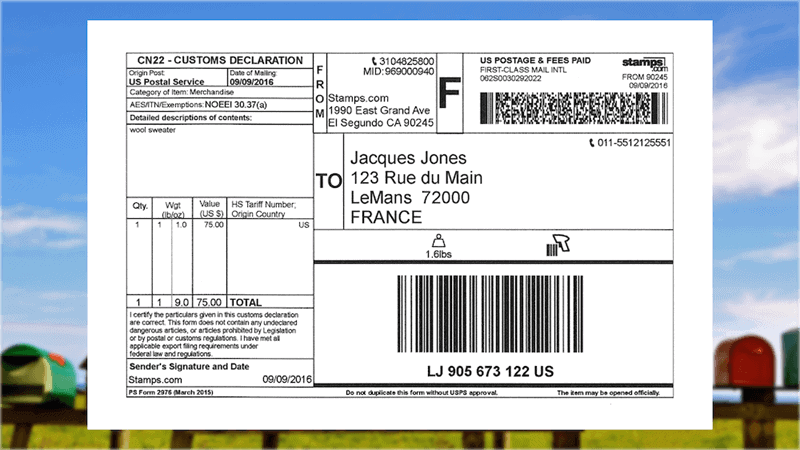
Tips for Safe Packaging
The most important thing about packing lithium batteries is that you do it safely so that nothing goes wrong during transit. First off, make sure all the terminals are taped or protected in any way because we don’t want anything touching each other and causing a short circuit. When protecting them against movement, use materials that can’t conduct electricity and aren’t flammable.
And then, when you pack them into the box, don’t forget about cushioning them with bubble wrap or packaging peanuts. Lastly, don’t use any old boxes lying around the house for shipping lithium batteries, as they’ve lost their integrity, meaning they won’t provide much protection anymore.
12. What Role Does Manufacturing Play When Transporting Chinese Lithium Batteries?
- Compliance with Regulations: Manufacturers follow safety rules set by authorities like IATA and DOT.
- Verify Battery Quality: Test batteries to ensure they’re reliable and safe before shipping them.
- Safety Data Sheets: They share information on battery properties and emergency procedures.
- Guidance on Packaging: Teach shippers how to properly pack batteries so they don’t harm themselves or others
- Training: Educate shippers on general battery characteristics, risks, and how to handle them.
13. How Important is the Freight Forwarder in the Transport of Lithium Batteries from China?
- Hazardous Materials Authority: They know how to handle dangerous items like lithium batteries. This knowledge ensures that what they do meets safety standards
- Knowledge of Routes: Knows the best way to transport these items so that it is efficient while following transport regulations
- Help with Paperwork: Doing this by yourself can be boring, but if you have a freight forwarder, not only do they help with papers like bills and invoices, but also packing lists. For lithium batteries, they assist you in getting Safety Data Sheets (SDS)
- Support Customs: Every country has its own customs rules. They know these rules well enough, especially when it comes to lithium battery shipments, which can vary greatly
- Management of Risks: You never know what could happen while in transit. That’s why they offer insurance to protect your shipment from any potential losses.
Choose the Best Shipping Option – consider speed, cost, reliability, and safety.
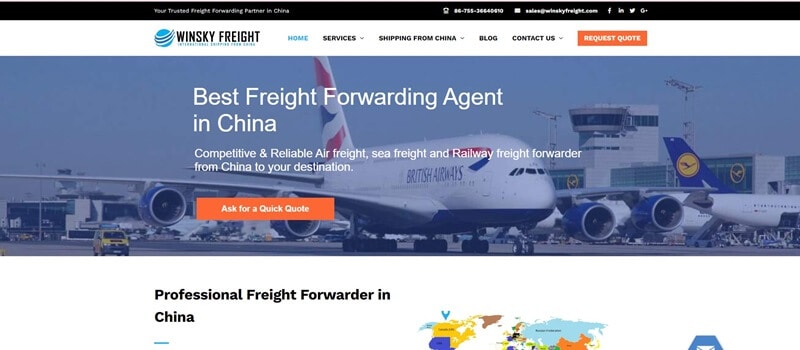
Honestly speaking, there are countless factors before you pick your shipping factors. But we can not depend on the term “countless” to count one – right? Therefore, I have listed some of the top factors you should look after:
- Speed: Opt for a shipping option that aligns with your time requirements. Expedited shipping is faster but tends to be more expensive. If time isn’t a constraint, standard shipping can be a cost-effective choice.
- Cost: Weigh price against service level. While cheaper options can save money, they might not provide the best value considering speed, reliability, and safety.
- Reliability: Choose a reputable shipping company. Reliability means your shipment will reach its destination intact and on time.
- Safety: Safety is paramount when dealing with lithium batteries. Ensure your chosen shipping option complies with all safety regulations and standards.
14. Quality Standards for Lithium Batteries
Lithium batteries should adhere to the following quality standards:
- Underwriters Laboratories (UL) Standards: UL is a global safety certification company that sets stringent standards for lithium batteries. Compliance with UL standards is a testament to the safety and performance of the battery.
- International Electrotechnical Commission (IEC) Standards: Globally recognized, these standards are comprehensive and rigorous. They test batteries on aspects like mechanical durability, performance, and safety.
- Institute of Electrical and Electronics Engineers (IEEE) Standards: These standards focus on battery reliability and longevity. Compliance with these standards signifies that the battery is reliable and durable.
- Chinese National Standards (GB/T): These are the compulsory national standards for lithium batteries produced in China. GB/T standards ensure that the batteries are safe, reliable, and of high quality.
15. What are the IATA guidelines for shipping lithium batteries from China?
The International Air Transport Association (IATA) sets guidelines for shipping lithium batteries. Here’s a brief overview:
- Proper Packaging: Batteries should be packed separately. They should be protected against short-circuiting. This can be done by insulating exposed terminals.
- Labeling: Packages must be clearly labeled. This indicates that they contain lithium batteries. The label should include a warning.
- Documentation: A Shipper’s Declaration is needed for dangerous goods. This document provides vital information about the shipment. It should accompany the shipment at all times.
- Training: Shippers must be trained. They need to know the IATA regulations. This training ensures safety during air transport.
- Inspection: Airlines may inspect packages. This is to confirm they follow IATA guidelines. Compliance is crucial to avoid shipment delays.
16. Proper Steps for Packing Lithium Batteries for Shipping
It is very important to carefully and safely pack lithium batteries when shipping them. To do so, follow these steps:
- Isolate Each Battery: Individually pack each battery to keep them separated. If they come into contact with one another, they can short-circuit.
- Insulate the Terminals: The parts of the batteries that stick out need to be insulated, you can wrap these parts with insulating tape or put them in a bag.
- Use Durable Packaging: Make sure the packaging used on the outside is strong and stable. It should be able to make it through transportation without being damaged.
- Pack Tightly: The batteries need to be packed tightly so that they don’t move while being transported. You can use materials like bubble wrap or peanuts to fill any empty space.
- Label Correctly: Clearly state what’s inside contains lithium batteries by labeling appropriately, and include the hazard class 9 label for handling these types of batteries.
- Document Everything: Don’t forget important paperwork like Safety Data Sheets (SDS) and Shipper’s Declaration for Dangerous Goods.
- Double Check Everything: Right before you seal everything up, double check every step you took previously, including making sure the insulation is done right and that everything is labeled correctly.
17. The Importance of Complete Paperwork When Avoiding Customs Delays
There are a lot of factors that go into avoiding delays, but one crucial one is ensuring all paperwork is provided and filled out correctly when shipping lithium batteries from China. Your freight forwarder should help with this process as well. Complete paperwork not only satisfies customs regulations but also expedites the shipping process. Here are some essential documents that should accompany your shipment:
- Commercial Invoice: This includes transaction details between both parties, which covers things like a description of goods, buyer and seller info, delivery terms, and total value of the goods.
- Packing List: Provides in-depth info about what’s inside the package. Including type, quantity, weight, and how it’s packed.
- Bill of Lading (For Sea Freight) or Air Waybill (For Air Freight): This is a contract between the shipper and carrier acting as proof of shipment receipt and evidence for carriage contracts.
- Dangerous Goods Declaration: Essential document when shipping hazardous goods like lithium batteries It provides info on how to handle dangerous goods properly and details about them in general.
- Fumigation Certificate: To prove that the wooden packing materials were treated or fumigated against pests.
- Safety Data Sheet (SDS): This provides information about the properties of the lithium batteries, their hazards, and how to handle them safely.
18. To What Specifications should Chinese Lithium Batteries be Built?
One common benchmark for lithium batteries is the UN38.3 Test Report. To ensure their safety throughout transport, they must pass rigorous testing before being shipped.
The international standard for portable electronic device batteries, IEC 62133, applies to both lithium-ion and nickel-based rechargeable batteries.
Third, Underwriters Laboratories’ UL 1642 details the fundamentals of lithium battery safety, from building to labeling.
Fourth, GB/T 18287-2013 is a straightforward Chinese national standard for mobile phone lithium-ion cells that prioritizes safety, reliability, and uniformity.
Lithium-ion cells and batteries used in portable electronic devices must meet the safety standards of Chinese national standard GB 31241-2014, which is another Chinese national standard.
Should You Insure Your Lithium Battery Investment?
If you’re going to be sending lithium batteries overseas, you should definitely purchase insurance.
Serves as insurance against shipment loss or damage in transit
Adds safety since shipping fragile things like batteries might be risky.
When transporting dangerous goods, you won’t have to worry about any unforeseen accidents.
19. FAQs
When compared to other test reports, how crucial is the UN38.3 one?
For lithium batteries, the UN38.3 Test Report is a mandatory international standard. It specifies rigorous testing processes to guarantee travel safety.
What is the scope of the IEC 62133 standard?
Rechargeable lithium-ion and nickel-based batteries destined for use in portable electronic devices are the primary topics of the IEC 62133 standard.
How does Winsky Freight guarantee the security of lithium batteries during packaging and transport?
In addition to proper labeling, sturdy packaging, and careful isolation of batteries, Winsky Freight offers customized packing and shipping solutions. We also check that all shipments adhere to applicable safety standards.
Answer: A Commercial Invoice, Packing List, Dangerous Goods Declaration, Material Safety Data Sheet, and Shipper’s Declaration for Dangerous Goods are all required paperwork.
What are some of the most frequent blunders people make when transporting lithium batteries?
Inadequate isolation or insulation, flimsy packaging, inaccurate labeling, a lack of or wrong paperwork, and a failure to adhere to standards like the UN38.3 Test Report or IEC 62133 are all examples of typical blunders.
Do you need more information about battery shipping or any project in mind? Feel free to send us a message. Our team of experts will answer promptly.